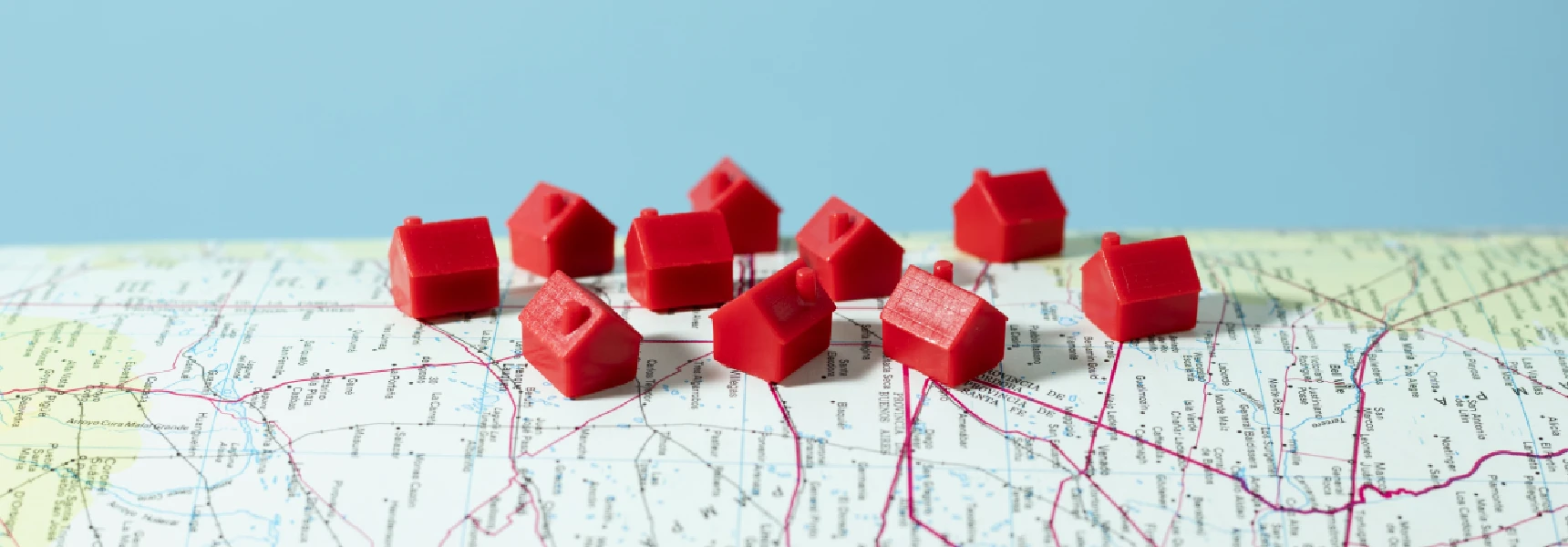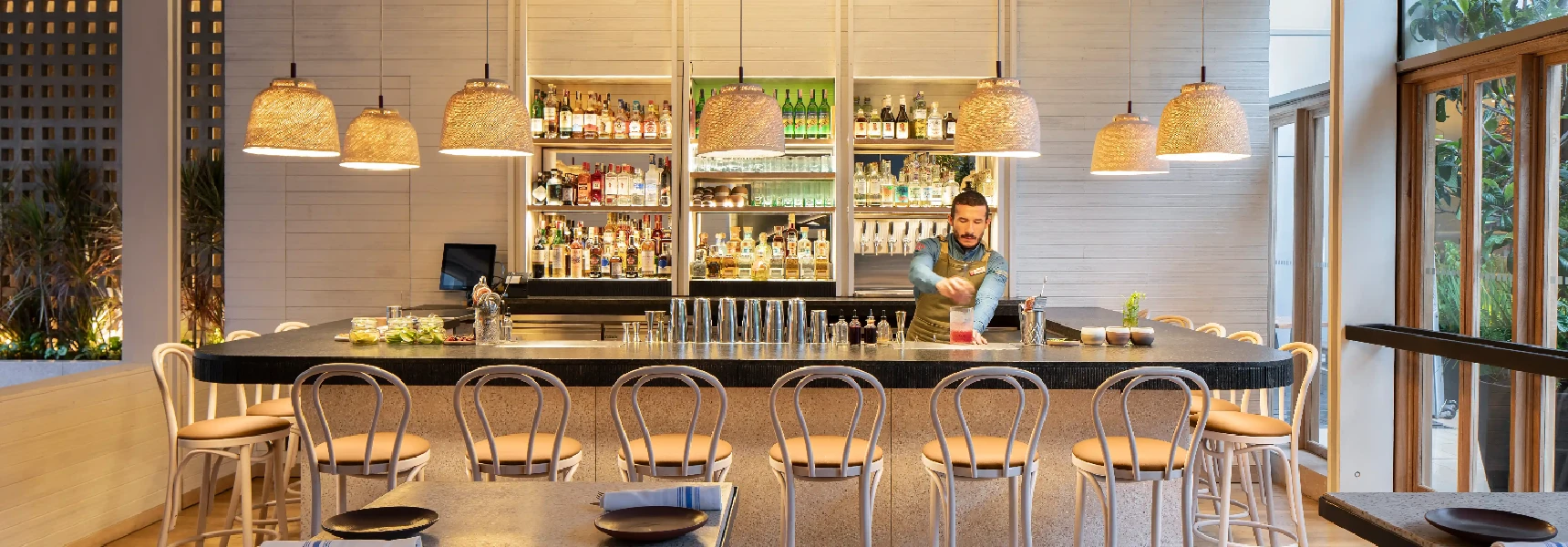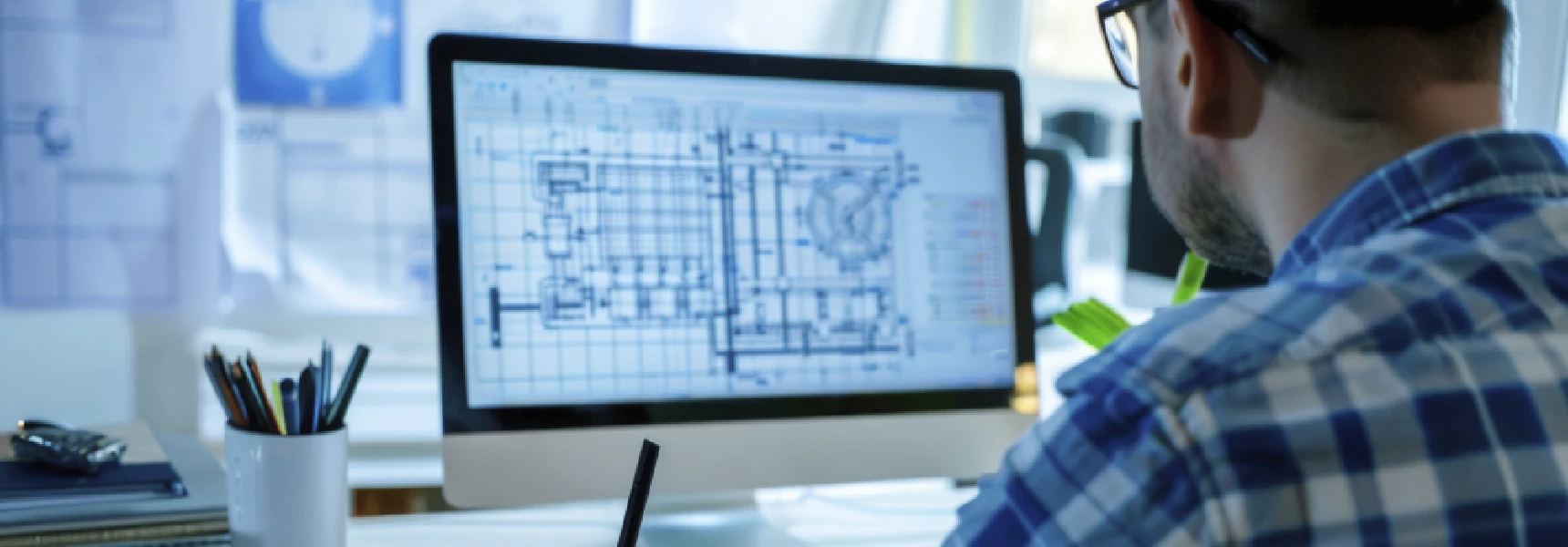Technology
Smart Restaurants: Integrating IoT and AI into Restaurant Interior Design

In today's competitive dining landscape, smart restaurants are emerging as a way to elevate both operational efficiency and guest experience. By integrating Internet of Things (IoT) devices and Artificial Intelligence (AI) into the very fabric of restaurant interior design, owners and designers can create spaces that adapt in real-time to customer needs and optimize operations. This approach goes beyond trendy gadgets – it's about embedding intelligence into lighting, climate control, and even layout planning to make restaurants more responsive, energy-efficient, and future-proof. In this post, we'll explore how IoT and AI technologies can be woven into restaurant interiors, highlighting examples like app-controlled lighting, automated climate systems, and AI-driven occupancy tools. We’ll also discuss why integrating these technologies from the design phase leads to more functional and adaptable restaurant environments.
Smart Lighting and Ambiance Control
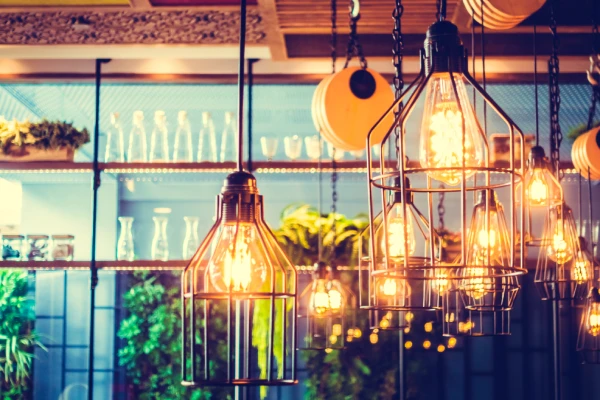
Lighting is a critical element of restaurant design, setting the mood and influencing how customers feel. IoT-enabled smart lighting systems such as Philips Hue and Lutron allow restaurateurs to finely tune ambiance with just a tap on a screen. These systems offer app-based control over brightness, color temperature, and even color hues, enabling instant adjustments to match the time of day or event. For example, a restaurant might use bright, energizing light during lunch for a lively atmosphere, then transition to warmer, dimmer tones at dinner for a relaxed vibe.
With smart lighting, staff can easily switch between preset scenes (e.g. “morning brunch”, “happy hour”, “romantic evening”) to create the right atmosphere consistently across all tables.
Importantly, smart lighting controls also improve operational efficiency. At the famed Restaurant Daniel in New York, a Lutron GRAFIK Eye lighting control system lets staff manage 16 different lighting zones from one panel.
This means with one action they can adjust the entire dining room’s illumination, rather than walking around to multiple switches. Such centralized control not only saves time but also ensures lighting levels are optimized for both guest comfort and energy savings. In fact, IoT-driven lighting can automatically dim or turn off certain fixtures during off-peak hours or when areas are unoccupied, cutting down on electricity use. Adaptive lighting systems that respond to occupancy make dining spaces more engaging while reducing wastage.
The result is an ambiance that is consistently on-brand and welcoming, achieved with less manual effort and lower energy costs.
Key benefits of smart lighting in restaurant interiors include:
- App-Controlled Ambiance: Managers or even waitstaff can adjust lighting via smartphone or tablet apps, selecting scenes or customizing light levels on the fly to suit the occasion.
- Dynamic Scheduling: Lights can be scheduled to gradually change throughout the day (e.g. brighter in the morning, softer by evening), automating the ambiance shift.
- Energy Efficiency: IoT lighting systems (often using LED technology) consume less power and can auto-dim when fewer guests are present or based on natural light, cutting energy bills.
- Enhanced Guest Experience: A well-lit space that adapts to different dining modes makes guests more comfortable and likely to remember the experience. For instance, warm lighting can make an environment feel cozy and intimate, while cooler brighter lighting can energize a breakfast or lunch crowd.
By planning for smart lighting infrastructure in the design phase (e.g. installing connected fixtures, wireless dimmers, and proper network support), restaurants ensure their ambiance is both controllable and future-ready. As trends or concepts change, lighting scenes can be reprogrammed without costly re-wiring, demonstrating how IoT integration offers long-term adaptability in interior design.
Automated Climate and HVAC Systems
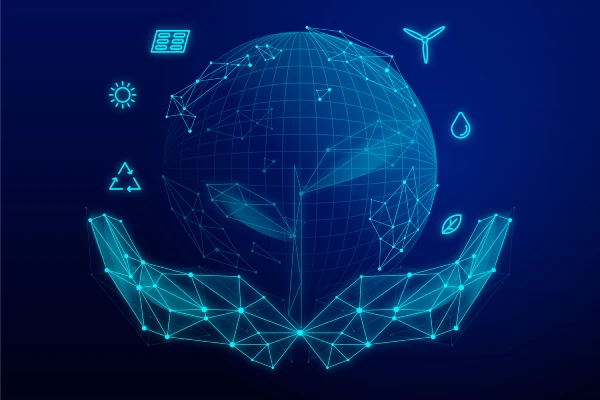
A restaurant’s climate – temperature, ventilation, and air quality – is pivotal to both guest comfort and operational costs. Automated HVAC systems, powered by IoT devices like smart thermostats (Nest, Ecobee), smart vents, and environmental sensors, enable precise control over the indoor climate. Instead of manual thermostat tweaks, these systems intelligently adjust heating, cooling, and ventilation in response to real-time conditions and occupancy.
For example, IoT-enabled climate control can track when the dining room is crowded and automatically lower the temperature to keep guests comfortable, then ease back on cooling when the room empties. According to industry insights, smart energy management systems can adjust lighting and HVAC based on occupancy and time of day, reducing energy waste while maintaining a comfortable environment.
This means when the lunch rush is over and sensors detect fewer people, the system might dim the lights and let the temperature drift up slightly (or vice versa in winter) to save energy without anyone noticing a drastic change. These adjustments happen seamlessly in the background, creating a stress-free atmosphere for both customers and staff.
Modern smart thermostats also learn usage patterns and preferences over time (using AI algorithms). They can differentiate between weekdays and weekends or adapt to seasonal changes automatically. Remote monitoring via smartphone gives managers insight into their restaurant’s climate status at any time and allows remote overrides if needed (for instance, turning up the heat before an early morning prep crew arrives). Additionally, IoT sensors can monitor humidity and CO₂ levels; if air quality dips (perhaps due to a busy kitchen or many patrons in a closed space), the system can boost ventilation fans to introduce fresher air.
Maintaining optimal air quality not only keeps guests comfortable but also helps employees stay alert and healthy during long shifts.
Consider some specific advantages of integrating smart climate control into restaurant design:
- Zoned HVAC Control: IoT allows different areas (kitchen, dining hall, private rooms) to have separate climate settings. For example, the kitchen can stay cooler without freezing the dining area, all managed automatically.
- Occupancy-Based Adjustments: Motion sensors or occupancy detectors communicate with thermostats to turn down HVAC in unoccupied zones, significantly saving on energy during off-peak times.
- Predictive Maintenance: Smart HVAC systems often include monitoring for equipment performance. They can alert management if a cooler or heater is straining, allowing proactive maintenance before a breakdown disrupts service.
- Energy Savings and Sustainability: By optimizing heating and cooling cycles, smart thermostats have been shown to save upwards of 10-15% on energy bills on average. In a restaurant setting (with high HVAC usage due to cooking and customer turnover), these savings are substantial and contribute to sustainability goals. AI algorithms can analyze energy usage patterns to further fine-tune settings for efficiency.
Designing smart climate control into the interior from the start ensures that sensors, thermostats, and ventilation controls are unobtrusively installed (hidden in ceilings or walls) and cover all critical areas. It’s much easier to wire in an IoT thermostat or connect dampers during initial construction than retrofitting later. The payoff is a restaurant that automatically maintains a pleasant atmosphere year-round, adapting to both the bustle of a Friday night and the quiet of off-hours, all while keeping utility costs in check.
AI-Driven Layout Optimization and Occupancy Tracking
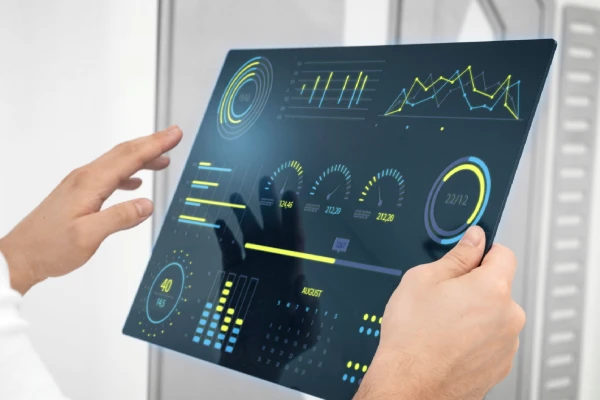
Interior design isn’t just about decor – in restaurants, layout and space utilization are key to efficiency and guest satisfaction. Here is where AI and IoT combine to make a powerful impact. Using AI-powered tools and occupancy sensors, designers and managers can optimize the floor plan, seating arrangements, and overall flow of a restaurant.
Occupancy tracking systems like those from Density.io and Xandar Kardian are modern solutions to understand how people use the space. These systems employ anonymous sensors (thermal, infrared, radar, etc.) to count people or detect presence in different zones of the restaurant in real time, without invading privacy. For instance, Density.io’s sensors can measure foot traffic at entrances or in dining areas, providing data on peak times and how guests move through the space. Xandar Kardian’s radar-based sensors can even detect subtle movements (like breathing) to know if a space is occupied, offering highly accurate real-time occupancy data. When integrated into the interior, such sensors can be tucked into ceilings or fixtures, invisibly gathering valuable data on customer patterns.
How does this data help? First, it enables AI-driven layout optimization. By analyzing traffic patterns – where do people tend to congest? which tables are most popular? how do diners navigate the buffet or restroom? – AI algorithms can suggest adjustments to improve flow. In practice, AI can crunch occupancy data and reveal that certain areas are underutilized while others bottleneck, leading designers to rearrange furniture or widen pathways. AI can effectively analyze how customers move through a restaurant and propose layout changes that make the most of available space, improving traffic flow and reducing wait times.
For example, an AI-generated plan might recommend shifting a table or adding a service station to open up a busy corridor, resulting in faster seating and happier guests.
Over time, as usage patterns evolve (perhaps the bar area becomes more popular on game nights, or delivery orders increase pickup traffic), the layout can be iteratively refined with AI insights.
Second, occupancy tracking supports operational decisions in real time. Managers can view live occupancy dashboards to see, for example, which sections of the restaurant are filling up. This can inform decisions like opening up additional seating, alerting staff to attend a crowded section, or even adjusting lighting/HVAC in response to the number of people present (tying back into the smart systems above). IoT sensors that track the flow of guests allow staff to manage table assignments and prevent overcrowding while enabling real-time adjustments, ensuring smooth service.
In other words, if one area is becoming too congested, hosts can redirect new guests to other sections, balancing the load and maintaining a pleasant atmosphere. This helps minimize wait times at the entrance and avoids overwhelming the kitchen or servers at any single zone.
Some AI-powered layout and occupancy tools that are making waves include:
- Space Analytics Platforms: Solutions like Density’s analytics software visualize usage heatmaps of a restaurant, helping identify underused space or peak congestion times.
- AI Layout Generators: Experimental tools (e.g., generative design software) can take a restaurant’s floor dimensions and desired capacity, then use algorithms to generate optimal table layouts. These consider variables like circulation paths and sightlines. In fact, generative AI excels at maximizing space efficiency by studying both customer movements and staff workflows, suggesting layouts that allow serving more patrons without feeling cramped.
- Occupancy-Based Automation: Integrating occupancy data with other systems means the restaurant reacts as a living environment. For example, if sensors detect that the private dining room is unused for the night, an AI system might recommend closing it off (saving energy) or repurposing it for overflow if the main hall is at capacity.
By incorporating these technologies during the design phase, architects can ensure there are provisions for sensor placement (like power/data points in ceilings), and that the layout itself is conceived with data feedback in mind. The outcome is a data-informed design: a restaurant interior that not only looks good on day one but continues to learn and improve as it operates, guided by IoT data and AI analysis.
Designing for Integration and Long-Term Adaptability
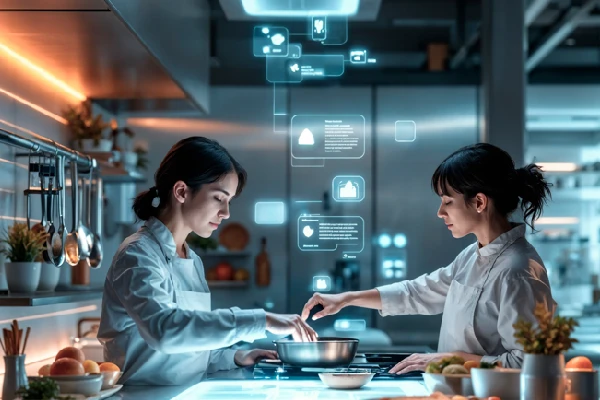
A crucial aspect of intelligent restaurant design is thinking ahead. Integrating IoT and AI elements into the initial design blueprint – rather than as afterthoughts – yields a space that is inherently more adaptable and future-proof. Technology evolves rapidly; today’s cutting-edge sensor or gadget might be outdated in a few years. Designing with a tech-forward approach means emphasizing flexible infrastructure and modular systems that can be upgraded with minimal disruption.
During the design phase, considerations might include: providing ample power outlets and network connectivity (Ethernet or robust Wi-Fi coverage) at strategic locations for devices like sensors, screens, or smart speakers; choosing lighting and HVAC systems that have open APIs or compatibility with standard automation protocols; and allocating space for a central control hub or server rack that can house IoT gateways and controllers. Architects and interior designers working closely with technology consultants (like the experts at AIspaces.ai) can plan hidden cable runs, mounts, and ventilation for equipment, ensuring that the tech integrates silently and aesthetically. The goal is a seamless blend – diners should notice the comfort and convenience, not the sensors and wires delivering it.
When smart tech is baked into the design, restaurants gain long-term adaptability in several ways. First, the space can easily accommodate new technologies. For example, if a few years down the line the owner wants to add smart glass windows (that tint automatically) or deploy an AI-driven robotic server, the existing power/data infrastructure and IoT platform can likely support these additions without needing to tear apart the walls or ceilings. The restaurant effectively has a technology backbone ready for expansion.
Second, a tech-integrated design allows for remote updates and reconfigurations. If an AI algorithm learns that a different HVAC schedule would be more efficient in summer, it can be reprogrammed without any physical change to the building. Lighting scenes can be reconfigured seasonally or for new branding themes via software. This adaptability means the interior environment can evolve with changing business needs or customer expectations with minimal cost. In contrast, a traditional design might require new light fixtures or rewiring to make what is a simple software tweak in a smart restaurant.
Finally, integrating IoT/AI contributes to resilience and responsiveness. Consider how the world saw rapid changes in dining formats during recent years (e.g. increased takeout, spaced-out seating for distancing). Restaurants that had flexible layouts and smart systems could adjust more swiftly – turning parking lots into drive-through pick-up zones with portable IoT devices, or monitoring occupancy to ensure safety thresholds. While we hope not to face such extreme shifts often, the principle holds: an IoT-enabled restaurant can respond to unexpected conditions (be it a sudden VIP influx or a need to conserve energy during a heat wave) far better than a static traditional setup.
In summary, planning for and integrating IoT and AI at the interior design stage leads to a restaurant that is efficient, customer-centric, and ready for the future. It’s an investment up front that pays off through smoother operations and the ability to adapt gracefully to change.
Conclusion
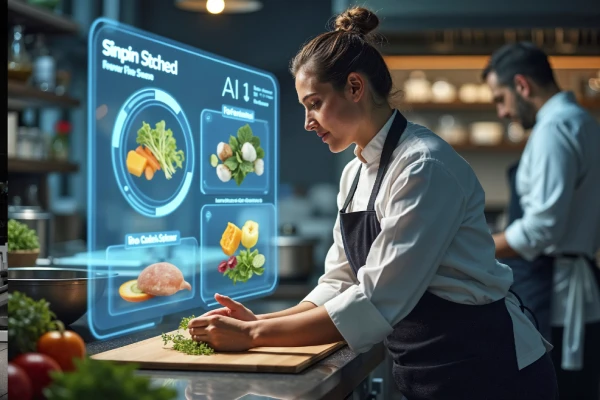
The fusion of IoT and AI with restaurant interior design is transforming how restaurants are built and operated. Smart restaurants leverage app-controlled lighting, automated climate control, and AI-guided layout optimizations to create an environment that is finely tuned to both guest enjoyment and operational efficiency. From the moment a customer walks in, they can feel the difference – perhaps it’s the perfect lighting and comfortable temperature, or the lack of bottlenecks even on a busy night – all thanks to intelligent design decisions made early on. For restaurant owners, these technologies translate to tangible benefits: lower energy bills, better space utilization, more satisfied customers, and empowered staff who can focus on hospitality while the environment “takes care of itself” in many ways.
As we've seen, the key to unlocking these benefits is to integrate technology thoughtfully during the design phase and not as an afterthought. Whether you run a cozy cafe or a high-end dining establishment, embracing IoT and AI in your interior design strategy can set you apart in a competitive industry. It ensures your restaurant isn’t just a place to eat, but a smart space that adapts and responds to create the best possible dining experience.
Ready to design an intelligent, tech-enabled restaurant environment? AIspaces.ai specializes in helping restaurant owners, architects, and designers bring these innovations to life. Our team can guide you through selecting the right IoT systems, planning AI-driven features, and seamlessly integrating them into your restaurant’s design. Contact us at AI Spaces to discover how we can collaborate to transform your restaurant into a smart, adaptive space that delights guests and optimizes operations. Let’s work together to create the future of dining, today.
